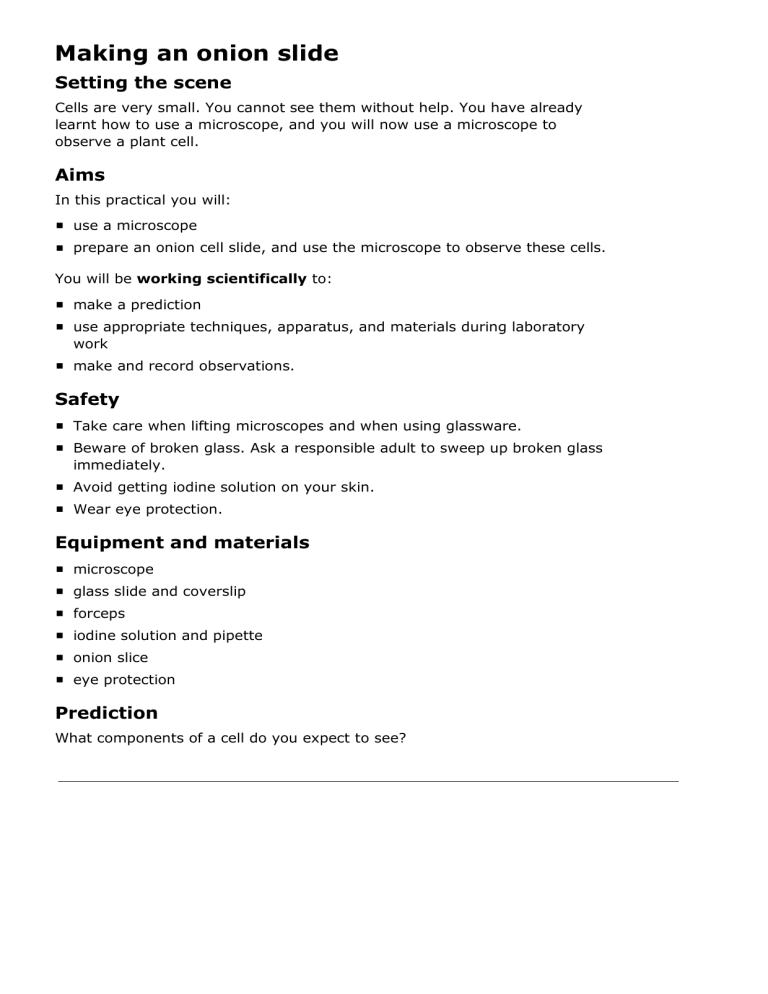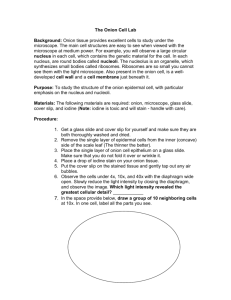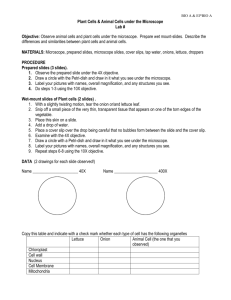Making an Onion Slide: Lab Worksheet
advertisement

Making an onion slide Setting the scene Cells are very small. You cannot see them without help. You have already learnt how to use a microscope, and you will now use a microscope to observe a plant cell. Aims In this practical you will: use a microscope prepare an onion cell slide, and use the microscope to observe these cells. You will be working scientifically to: make a prediction make and record observations. use appropriate techniques, apparatus, and materials during laboratory work Safety Take care when lifting microscopes and when using glassware. Avoid getting iodine solution on your skin. Beware of broken glass. Ask a responsible adult to sweep up broken glass immediately. Wear eye protection. Equipment and materials microscope glass slide and coverslip forceps iodine solution and pipette onion slice eye protection Prediction What components of a cell do you expect to see? Method 1 Collect a piece of onion. 2 Remove one of the onion layers. 3 Using forceps, carefully peel off the inner skin of the onion layer. 4 Place the onion skin onto a clean glass slide. Use your forceps to keep the onion skin flat on the glass slide. 5 Using a pipette, add one or two drops of dilute iodine solution on top of the onion skin. 6 Place a coverslip on top of the skin. 7 Observe using a microscope. Results Draw a labelled diagram of an onion cell in the space below. Hint: Use a pencil for your drawing. Label lines should be drawn using a ruler. Questions 1 What components of the cell can you see using the microscope? Use the student book pages on 'Plant and animal cells' to help you 2 What did you do to make the experiment safe? 3 Why did you use iodine to help make your slide? Extension 1 Calculate the magnification you used to see the cells. Show your working. 2 Suggest why you could not see any chloroplasts?




